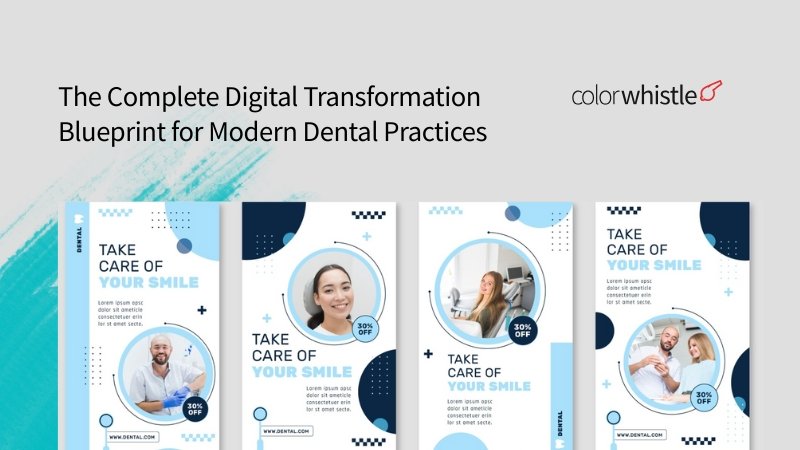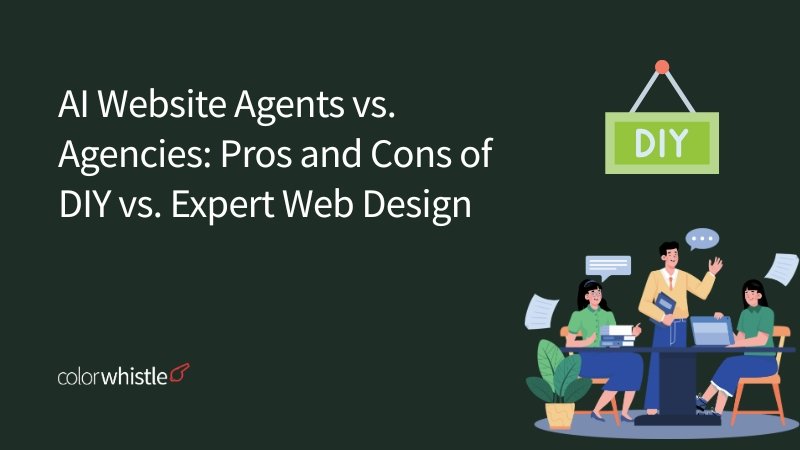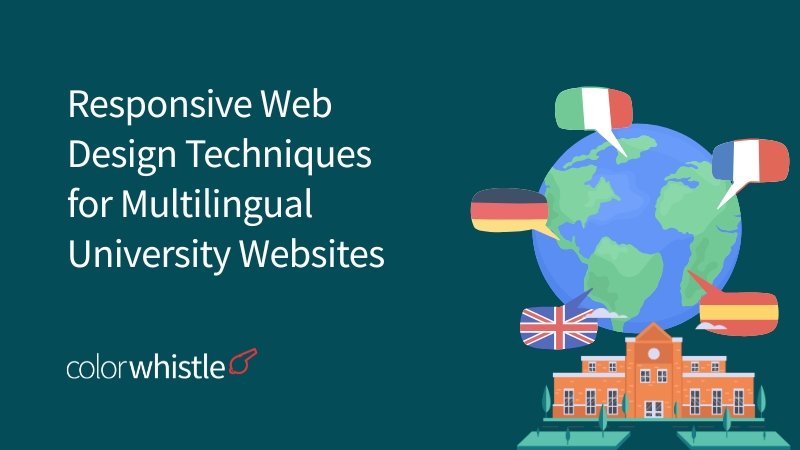The world of dental care has changed dramatically. By 2025, digital transformation dental practices 2025 is no longer just a dream, it has become the standard expectation for practices looking to grow sustainably. Today’s patients research providers online, book appointments using their mobile devices, and expect smooth communication throughout their entire treatment process. The practices that succeed are the ones that have gone beyond using separate digital tools and have adopted complete systems that work together.
Dental Website Development now plays a crucial role in attracting new patients. It works alongside artificial intelligence, marketing automation, and customer relationship management platforms to create a unified approach that transforms how practices find, convert, and keep patients. Mid-sized and multi-location dental groups face unique challenges: they must compete with both small boutique practices offering personalized experiences and large corporate chains benefiting from cost advantages.
The key to success lies in implementing modern dental marketing strategies that integrate every aspect of the patient experience. From the initial Google search to post-treatment follow-ups, each interaction must demonstrate the practice’s commitment to excellence. In this context, exploring options like remote staffing vs outsourcing could provide valuable insights for effective resource management.
Additionally, it is essential to embrace dental technology trends that emphasize automation, personalization, and data-driven decision-making as the foundation of successful practices. This roadmap offers practical guidance for developing a strong dental digital strategy that positions your practice for long-term success in an increasingly digital marketplace.
To further enhance your online presence, consider collaborating with one of the best digital marketing agencies available in Canada for 2025. These agencies can help you revamp your online strategies and dominate your market effectively.
The Essential Components of a Unified Digital Ecosystem for Dental Practices
The foundation of any successful digital transformation strategy rests on creating a unified dental digital ecosystem, an interconnected framework where every digital touchpoint works in harmony to deliver seamless patient experiences. For mid-sized and multi-location dental groups, this integration eliminates data silos, reduces operational friction, and creates a cohesive brand experience across all patient interactions.
A truly unified system connects your website, patient management software, marketing platforms, and communication channels into a single, intelligent infrastructure. When a patient books an appointment online, that information flows automatically into your practice management system, triggers confirmation messages, updates your CRM, and informs your marketing automation platform, all without manual intervention. This level of integration transforms how practices operate, allowing teams to focus on patient care rather than administrative coordination.
1. Dental Website Development & Design in 2025
Dental website development has evolved far beyond simple digital brochures. Modern dental website design serves as the central hub of patient acquisition and engagement, requiring sophisticated architecture that balances aesthetic appeal with functional excellence.
The aesthetic landscape of dental websites in 2025 prioritizes minimalist design philosophies that communicate professionalism and trust. Clean layouts with generous white space, high-quality photography showcasing real practice environments, and subtle animations that guide user attention without overwhelming visitors define the current standard. Loading speed has become non-negotiable, practices must achieve sub-three-second load times across all devices, as every additional second of delay correlates with measurable drops in conversion rates.
A mobile-friendly dental website represents the baseline expectation rather than an optional enhancement. With over 70% of healthcare searches originating from mobile devices, responsive design must deliver flawless experiences across screen sizes. This extends beyond simple scaling, mobile interfaces require touch-optimized buttons, simplified navigation menus, and streamlined forms that minimize typing on smaller keyboards.
Patient-centric web design dentistry principles place user experience at the forefront of every design decision:
- Intuitive navigation architecture that allows visitors to find information within three clicks
- Prominent call-to-action buttons strategically placed throughout the site, using action-oriented language like “Schedule Your Smile Consultation”
- Visual hierarchy that guides eyes naturally from headline to supporting content to conversion points
- Accessibility compliance ensuring patients with disabilities can navigate and interact with all website features
The technical infrastructure supporting modern dental web design must include several non-negotiable features:
Online appointment booking systems integrated directly into the website eliminate phone tag and accommodate patients who prefer scheduling outside business hours. These systems should display real-time availability, allow patients to select preferred providers, and send automatic confirmations.
Comprehensive service detail pages educate patients about procedures, addressing common concerns and setting realistic expectations. Each service page should include procedure descriptions, expected timelines, insurance information, and relevant before-and-after galleries where appropriate.
Educational content hubs featuring regularly updated blogs, video tutorials, and detailed FAQ sections position practices as trusted authorities. This content serves dual purposes, educating patients while improving search engine visibility through fresh, relevant material.
2. Ongoing Website Maintenance & SEO Optimization for Dental Practices
A dental website is more than just an online brochure, it needs regular care to work at its best. This ongoing maintenance keeps your entire digital presence secure, compliant with healthcare rules, and search engine friendly, which affects how easily people can find your practice.
The Importance of Regular Updates and Security
Today’s dental websites need regular upkeep to stay safe and compliant. This includes updating software, fixing security issues, and checking that you’re following HIPAA rules to protect patient information. If you don’t keep up with these updates, you could lose the trust of your patients and drop in search engine rankings.
Here are some key elements of a solid maintenance plan for your dental website:
- Backing up your website regularly
- Renewing SSL certificates to ensure secure connections
- Updating plugins to keep everything running smoothly
Improving Performance for Better Patient Acquisition
How well your website performs can directly affect how many new patients you get. If your pages take longer than three seconds to load, potential patients might leave and go to a competitor’s site instead. Fixing broken links and making sure your site works well on mobile devices are also important steps in turning visitors into booked appointments.
Google now considers website performance as a major factor in its search rankings, so it’s crucial to include this in your strategy for integrating dental CRM systems.
Effective SEO Strategies for Dental Practices
Local SEO for dentists requires specific tactics that are different from general search optimization methods. Your practice needs to be at the top of “near me” searches and location-specific queries that bring high-intent patients through your doors:
- Optimizing your Google Business Profile with accurate Name, Address, Phone information, service categories, and regular posts
- Creating landing pages for each location if you have multiple dental offices targeting different areas
- Using schema markup to help search engines understand what services you offer, when you’re open, and what patients think about you
- Writing blog posts that answer common questions from patients about specific conditions
By combining patient-focused web design with effective SEO practices, you can see even greater results. When you provide helpful information on topics like teeth whitening or emergency dental care, you position yourself as an expert while also attracting organic search traffic.
Boosting Visibility with Reviews and Paid Campaigns
Patient reviews play a crucial role in both search rankings and conversion rates. By sending automated emails after appointments asking satisfied patients to leave reviews on platforms like Google or Yelp, you can increase the number of positive testimonials available online. These genuine reviews not only improve local search visibility but also address any concerns potential patients may have when researching your practice.
Pay-per-click (PPC) campaigns can also help by giving immediate visibility for competitive keywords. If your dental website is designed to be mobile-friendly and optimized for conversions, it can turn paid traffic into booked appointments, making every advertising dollar spent worthwhile.
Retargeting campaigns are another way to make the most out of your marketing budget by reaching out again to those who visited but didn’t schedule an appointment initially.
3. Leveraging Artificial Intelligence in Modern Dentistry
Artificial intelligence has evolved from a futuristic concept to a practical necessity within the unified dental digital ecosystem. By 2025, AI dentistry applications have become integral to both clinical operations and patient engagement strategies, transforming how practices deliver care and manage their digital presence.
Clinical Diagnostics and Treatment Precision
AI diagnostics dental care has revolutionized radiographic analysis and treatment planning. Modern AI algorithms can detect cavities, periodontal disease, and bone loss with accuracy rates exceeding 95%, often identifying issues that might be missed during manual review. These systems analyze digital x-rays, CBCT scans, and intraoral photographs in real-time, providing dentists with:
Instant identification of pathologies and anomalies across multiple imaging modalities
Predictive analytics for disease progression, enabling proactive treatment planning
Standardized documentation that reduces diagnostic variability across multi-location practices
Enhanced patient education through visual AI-generated reports that clearly illustrate findings
The integration of AI in dentistry for diagnostics doesn’t replace clinical judgment; it augments the dentist’s expertise, allowing practitioners to spend more time on complex decision-making and patient communication rather than routine image interpretation.
Intelligent Patient Communication Through Chatbot Triage
Chatbot triage dentistry represents a critical component of patient-centric web design dentistry and marketing automation dentistry. AI-powered chatbots embedded within mobile-friendly dental websites provide 24/7 patient support, handling:
- Initial symptom assessment and urgency classification
- Immediate responses to common questions about services, insurance, and office policies
- Appointment availability checks and scheduling assistance
- Post-treatment care instructions and medication reminders
These intelligent systems learn from each interaction, continuously improving their ability to understand patient intent and provide relevant information. The chatbot data feeds directly into the practice’s dental CRM integration, creating comprehensive patient profiles before the first appointment.
Automated Lead Qualification and Patient Acquisition
AI-driven lead qualification transforms how practices identify high-value prospects within their dental website development strategy. Machine learning algorithms analyze visitor behavior patterns, form submissions, and engagement metrics to score leads based on:
- Treatment interest complexity and revenue potential
- Likelihood to convert based on browsing behavior and time on site
- Insurance compatibility and geographic proximity
- Engagement level with educational content and service pages
This intelligent scoring system prioritizes follow-up efforts, ensuring the practice team focuses attention on prospects most likely to become long-term patients. The AI continuously refines its scoring models based on actual conversion outcomes, creating a self-improving system that enhances patient acquisition efficiency over time.
Moreover, the development of scalable AI-powered MVPs has made it easier for dental practices to integrate advanced technology into their operations seamlessly. This API development guide can provide valuable insights for practices looking to implement such solutions effectively.
In addition to these advancements in dental technology, there’s also an emerging trend where the Metaverse is upgrading K-12 education, which could potentially influence how dental education is delivered in the future.
Furthermore, as we see a rise in the use of mobile devices for healthcare purposes, it’s crucial for dental practices to stay updated with Google’s latest AI advancements on Android, which can enhance productivity and personalize interactions with patients.
4. Marketing Automation & CRM Integration for Patient Lifecycle Management in Dentistry
The success of any effective digital ecosystem in dentistry depends on how well practices manage their relationships with patients, starting from the first inquiry and continuing through long-term retention. Dental CRM systems combined with marketing automation tools for dentistry establish an advanced framework that transforms disjointed patient interactions into smooth, data-driven experiences.
Streamlining Patient Communications Through Automation
Managing appointments manually consumes staff resources and increases the chances of human error. Modern dental marketing automation platforms eliminate these inefficiencies by:
Sending automated appointment confirmations immediately after booking through the dental website design interface
Deploying intelligent reminder sequences via SMS and email 24-48 hours before scheduled visits
Triggering follow-up communications post-treatment to check on recovery and encourage review submissions
Re-engaging dormant patients with personalized recall reminders based on their specific treatment history
Practices implementing these automated workflows report no-show reductions of 30-40%, directly impacting revenue stability and operational efficiency.
Comprehensive Patient Journey Tracking with Dental CRM Integration
A robust dental CRM system functions as the central nervous system of your patient-centric web design dentistry strategy. These platforms capture and organize every touchpoint:
The moment a prospect submits a form on your mobile-friendly dental websites, the CRM begins building their profile. Each subsequent interaction, phone calls, email opens, appointment attendance, treatment acceptance rates, adds layers of behavioral data. This 360-degree view enables staff to understand patient preferences, anticipate needs, and deliver personalized service that builds loyalty.
Integration between your dental website development platform and CRM ensures zero data loss. When patients book through online scheduling tools, their information automatically populates the CRM, eliminating duplicate data entry and reducing administrative burden.
Data-Driven Campaign Precision
The true power of dental CRM systems emerges when combined with marketing automation capabilities similar to those used in marketing automation for educational institutions. Practices can segment their patient database using dozens of criteria:
- Treatment history and outstanding treatment plans
- Last visit date and recall status
- Demographic information and insurance coverage
- Engagement levels with previous communications
These segments enable hyper-targeted campaigns. A practice might send cosmetic dentistry promotions exclusively to patients who’ve expressed interest in aesthetic treatments, while directing orthodontic content to families with teenagers. This precision dramatically improves conversion rates compared to generic mass communications.
The dental CRM integration also reveals which marketing channels drive the highest-value patients, allowing practices to optimize their marketing spend across SEO, PPC, and other channels within their unified dental digital ecosystem. The insights gained can be likened to the data-driven approach utilized in travel marketing campaigns, where precision targeting leads to higher engagement and conversion rates.
Moreover, the implementation of AI-driven solutions like those provided by GoHighLevel can further enhance CRM automation, resulting in smarter customer management and improved operational efficiency.
5. Building a Strong Brand Presence Online with Content & Multimedia Strategies for Dental Practices
A unified dental digital ecosystem extends beyond functional elements like CRM integration and marketing automation dentistry, it requires a compelling brand narrative that resonates with prospective patients. Modern dental website development must prioritize authentic storytelling through strategic content and multimedia assets that differentiate your practice in an increasingly competitive marketplace.
Professional Visual Assets as Brand Foundations
High-quality imagery and video content serve as the cornerstone of effective dentist branding online. Professional photography capturing your team, clinical environment, and patient interactions communicates practice values before a single word is read. Video tours of your facilities, procedural explanations, and dentist introductions humanize your brand while addressing common patient anxieties. These visual elements should be seamlessly integrated throughout your patient-centric web design dentistry, from homepage hero sections to service-specific landing pages.
Mobile-friendly dental websites must optimize these multimedia elements for fast loading across all devices without sacrificing visual impact. Compressed video files, responsive image sizing, and strategic placement ensure that your brand story reaches patients regardless of how they access your site. This approach mirrors successful omnichannel retail strategies used by brands like Mizzen+Main, which connect online and offline stores for improved customer experiences.
Trust-Building Through Social Proof
Before-and-after galleries represent one of the most powerful conversion tools in dental website design. These visual testimonials provide tangible evidence of clinical expertise while helping prospective patients envision their own transformation. When integrated within your unified dental digital ecosystem, these galleries can be tagged with treatment types, automatically populating relevant service pages and feeding into your dental CRM integration for personalized follow-up campaigns.
Patient testimonials, both written and video format, should be strategically distributed across your site architecture. Embedding review snippets on service pages, featuring detailed case studies in blog content, and showcasing video testimonials on your homepage creates multiple touchpoints for building credibility. This social proof integrates with your marketing automation dentistry efforts, triggering automated review requests post-treatment and feeding positive feedback directly into your website through API connections with platforms like Google Business Profile.
Incorporating user-generated content into video marketing strategies can further enhance trust-building efforts by providing authentic testimonials from real patients.
Educational Content as Authority Building
A robust blog strategy positions your practice as a thought leader while supporting SEO objectives within your dental web design framework. Educational articles addressing common patient questions, treatment options, and oral health best practices attract organic search traffic while nurturing prospects through the decision-making process. This content library becomes a valuable asset within your unified dental digital ecosystem, feeding email nurture campaigns, social media posts, and patient education materials distributed through your CRM platform.
Additionally, leveraging lookbook video strategies similar to those used by fashion brands on platforms like YouTube could offer a unique way to visually showcase treatments or services offered at your practice, further enhancing patient engagement and understanding.
Case Insights: Success Stories from Digitally Transformed Dental Practices
Real-world case studies digital dentistry reveal the tangible impact of comprehensive digital transformation. Here are some success stories from dental practices that have embraced digital solutions:
Pacific Northwest Dental Group
A mid-sized dental group in the Pacific Northwest implemented a unified ecosystem combining AI-powered chatbots, automated appointment reminders, and an optimized mobile-responsive website developed using React JS. Within six months, the practice documented:
- 47% increase in new patient inquiries through their website’s streamlined booking interface
- 89% reduction in no-show rates attributed to automated SMS and email reminder sequences
- 3.2x growth in online review volume through systematic post-appointment review solicitation
Texas Multi-Location Practice
A multi-location practice in Texas integrated CRM-driven patient lifecycle management with personalized email campaigns segmented by treatment history. Their data showed:
47% increase in new patient inquiries through their website’s streamlined booking interface
89% reduction in no-show rates attributed to automated SMS and email reminder sequences
3.2x growth in online review volume through systematic post-appointment review solicitation
Independent Cosmetic Dentistry Clinic
An independent cosmetic dentistry clinic leveraged professional before-and-after photography galleries alongside AI-powered lead qualification. The practice experienced 156% year-over-year growth in cosmetic procedure bookings, with their analytics revealing that prospects who engaged with visual case galleries converted at 4.7 times the rate of those who didn’t.
These practices demonstrate how integrated digital strategies create measurable competitive advantages in patient acquisition and retention metrics.
This transformation is not just limited to dental practices but extends to various sectors including SaaS companies, where understanding Total Addressable Market (TAM) can unlock significant growth potential.
Future-Proofing Your Dental Practice Digital Strategy Beyond 2025
The world of digital dentistry is constantly changing, and it’s crucial for dental practices to keep up with the latest technology trends. One of the most significant advancements in this field is Generative AI, which is revolutionizing how dental practices communicate with their patients.
How Generative AI is Transforming Dental Practices
Generative AI has the potential to transform various aspects of a dental practice’s operations, including:
- Personalized Patient Education: With Generative AI, dental practices can create tailored educational materials for each patient. This means that instead of using generic brochures or videos, dentists can provide specific information about a patient’s condition or treatment plan.
- Dynamic Website Content: A practice’s website is often the first point of contact for potential patients. By using Generative AI, dental practices can automatically generate content that is relevant and engaging to their target audience. This could include blog posts about common dental issues or articles discussing the latest advancements in oral health.
- Customized Treatment Explanations: Every patient is unique, and so are their treatment needs. Generative AI allows dentists to create personalized explanations for each procedure or therapy being recommended. This not only helps patients understand their treatment better but also builds trust between them and the dentist.
Other Emerging Technologies Shaping the Future of Dentistry
While Generative AI is at the forefront of technological advancements in dentistry, there are other emerging technologies that are also shaping its future:
- Flutter Apps: The adoption of Flutter apps is becoming increasingly important for dental practices. Flutter’s popularity stems from its ability to create customized solutions that enhance user experience.
- Proactive Reputation Management: In today’s digital age, online reviews can make or break a business. That’s why proactive reputation management has become non-negotiable for competitive positioning.
- Voice Search Optimization: As voice-activated devices become more prevalent, it’s essential for dental practices to optimize their online content for voice search queries.
- Blockchain Technology: Blockchain technology is emerging as a secure method for managing patient records and insurance claims.
- Virtual Reality Tools: Virtual reality tools are beginning to transform patient education and anxiety management during procedures.
By staying informed about these trends and integrating them into their digital strategy, dental practices can future-proof their operations and provide better care to their patients.
Conclusion
The pathway to success in modern dentistry lies in embracing comprehensive digital transformation benefits dentistry practices can no longer afford to ignore. Independent clinics and multi-location groups face a clear choice: adapt to the integrated digital ecosystem or risk falling behind competitors who have already made the leap.
Dental Website Development serves as the cornerstone of this transformation, yet it represents just the beginning. The practices that will dominate their markets through 2025 and beyond are those that view digital infrastructure as an interconnected system, where websites, AI tools, CRM platforms, and marketing automation work together to deliver exceptional patient experiences at every touchpoint.
The competitive landscape rewards practices that commit to continuous innovation rather than one-time implementations. Digital transformation is not a destination but an ongoing journey of refinement and adaptation. As patient expectations evolve and new technologies emerge, your digital strategy must evolve alongside them.
The question facing dental practice leaders today is not whether to pursue digital transformation, but how quickly and comprehensively they can implement it. The practices that act decisively now, investing in robust digital ecosystems while maintaining focus on patient-centric design, will establish market leadership positions that become increasingly difficult for competitors to challenge. Your practice’s future growth depends on the digital foundation you build today.
FAQs (Frequently Asked Questions)
What are the key trends in dental website development and design for 2025?
Dental website development in 2025 emphasizes sleek, fast-loading, and mobile-friendly designs. Patient-centric principles focus on usability and conversion with clear CTAs and intuitive navigation. Essential features include online appointment booking, detailed service pages, educational content like blogs and FAQs, and social media integration to enhance patient engagement.
How does a unified digital ecosystem benefit mid-sized and multi-location dental practices?
A unified dental digital ecosystem integrates website design, maintenance, AI applications, CRM systems, and marketing automation into one cohesive system. This streamlines operations, enhances patient engagement, improves appointment scheduling and follow-ups, and supports data-driven marketing strategies essential for thriving in a competitive dental landscape by 2025.
In what ways is artificial intelligence transforming modern dentistry?
AI in dentistry enhances clinical diagnostics by improving treatment precision through radiography analysis. AI-powered chatbots facilitate instant patient triage and communication on dental websites. Additionally, AI automates lead qualification to efficiently identify high-potential patients, thereby optimizing practice workflows and patient care.
What role does marketing automation and CRM integration play in managing the patient lifecycle in dentistry?
Marketing automation combined with dental CRM systems automates appointment scheduling, reminders, and follow-ups to boost patient retention and reduce no-shows. CRM platforms track patient interactions throughout their journey from prospect to loyal patient, enabling personalized communication and targeted campaigns based on data-driven insights.
How can dental practices build a strong online brand presence using content and multimedia strategies?
Dental practices can create authentic brand stories through professional imagery and videos that reflect their quality and culture. Incorporating before-and-after photos and patient testimonials builds trust on websites. Educational content such as blogs positions the practice as a thought leader, enhancing online visibility and reputation.
What strategies should dental practices adopt to future-proof their digital strategy beyond 2025?
To future-proof digital strategies beyond 2025, dental practices should leverage emerging technologies like generative AI for dynamic content creation. Proactive online reputation management including soliciting reviews on Google Business Profile is crucial. Continuous innovation with integrated digital solutions will ensure sustainable growth in the evolving dental market.





